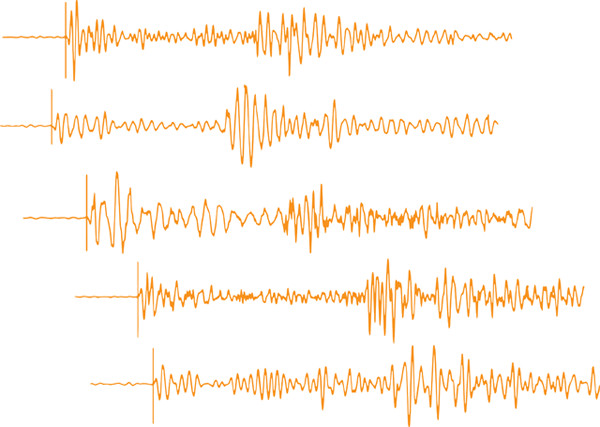
by Mary Caperton Morton Thursday, October 2, 2014

Credit: Kathleen Cantner, AGI.
In the week or two before the magnitude-8.6 Indian Ocean earthquake in 2012, Earth was unusually quiet, with few large quakes over magnitude 5. Afterward, seismic activity all over the globe was elevated for more than a week. Then, suddenly, global seismicity dropped off precipitously: Beginning two weeks after the mainshock, no earthquakes of magnitude-6.5 or greater occurred for 95 days.
“This event was really a freak in terms of the aftermath,” says Fred Pollitz, a geophysicist at the U.S. Geological Survey (USGS) in Menlo Park, Calif., who led a study on the event published in the Bulletin of the Seismological Society of America in April 2014. Typically, he says, “we see a magnitude-6.5 quake somewhere in the world about once every 10 days, so to go more than three months without one is really remarkable.”
Suppression of seismicity on a global scale can be likened to apples ripening on a tree, says Ross Stein, a geophysicist at USGS in Menlo Park and co-author of the study. “If every week, half a dozen apples fall off the tree in the normal process of ripening, and then you go for a week with no apples falling, there are probably a lot more apples ready to fall than normal,” Stein says. “Now if you shake the trunk, you might get a lot more apples falling at once. Then, you might have to wait longer than normal to see more apples ripen and fall again.”
The pattern challenges the previously held notion that dynamic stresses can only increase earthquake rates, rather than inhibit them, Pollitz says. “It’s possible that instead of moving fluids into a fault zone, certain stresses can also move fluids out and pull the fault away from failing,” he says. “Then you’ll see a quiet period until the fault returns to being close to failure.”
© 2008-2021. All rights reserved. Any copying, redistribution or retransmission of any of the contents of this service without the expressed written permission of the American Geosciences Institute is expressly prohibited. Click here for all copyright requests.